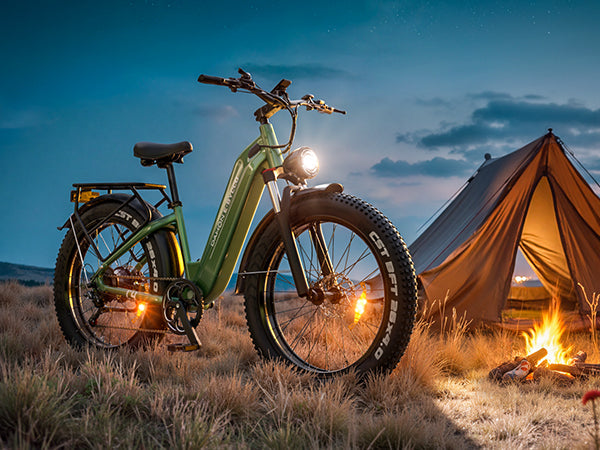Electric bikes, commonly known as e-bikes, have gained significant popularity in the United States due to their convenience, environmental benefits, and cost-effectiveness. However, as their use has increased, so too has the need for clear regulations to ensure safety and proper use. This blog post aims to provide an overview of the licensing requirements, age limits, and laws pertaining to e-bikes in the United States.
Do Electric Bikes Need a License in the US?
The requirement for a license to operate an electric bike in the U.S. varies depending on the state and the classification of the e-bike. Generally, e-bikes are divided into three classes:
Class 1: Pedal-assist only, with no throttle, and a maximum assisted speed of 20 mph.
Class 2: Throttle-assisted with a maximum speed of 20 mph.
Class 3: Pedal-assist only, with a maximum assisted speed of 28 mph.
For most states:
Class 1 and Class 2 e-bikes typically do not require a license. These bikes are often treated like traditional bicycles and can be used on bike paths and lanes.
Class 3 e-bikes may have more stringent requirements. Some states require a driver's license to operate a Class 3 e-bike, while others might only require the rider to be at least 16 years old without any specific licensing. As for insurance, only in North Dakota is it required.
Is There an Age Limit for Riding an Electric Bike?
Age limits for riding e-bikes also vary by state and the class of the e-bike:
Class 1 and Class 2 e-bikes often have no minimum age requirement or require riders to be at least 14-16 years old.
Class 3 e-bikes usually require riders to be at least 16-18 years old due to the higher speeds these bikes can achieve.Generally speaking, most people who ride electric bicycles are over the age of 16. Some states also have regulations, such as Arkansas is 10 years old, Virginia is 14 years old, and Louisiana is 15 years old.
E-Bike Laws in the United States

E-bike laws in the U.S. can differ significantly from one state to another. Here are some common regulations and considerations:
Helmet Requirements: Most states mandate helmet use for riders under a certain age, often 18, and for all riders of Class 3 e-bikes.
Road Use: E-bikes are generally allowed on bike paths, bike lanes, and roads. However, some states or municipalities may restrict Class 3 e-bikes from certain bike paths or trails due to their higher speeds.
Speed Limits: The speed limit for e-bikes is typically capped at 20 mph for Class 1 and Class 2, and 28 mph for Class 3. Exceeding these limits can reclassify the vehicle, potentially requiring a motorcycle license and registration.
Equipment Requirements: E-bikes must meet certain equipment standards, including having functional pedals, a motor that ceases to assist at the specified speed limit, and often lights and reflectors for night riding.
Examples of State-Specific Regulations
California: No license required for Class 1 and Class 2 e-bikes. Riders must be at least 16 years old to operate a Class 3 e-bike and wear a helmet.
New York: Class 1 and Class 2 e-bikes are treated like bicycles, with no license required. Riders must be at least 16 years old. Helmets are required for Class 3 e-bikes.
Florida: No license required for e-bikes, and they can be operated on most roads and bike paths. Riders must be at least 16 years old.
Conclusion
The regulations surrounding electric bikes in the United States are evolving as the popularity of these vehicles continues to grow. It's crucial for e-bike users to familiarize themselves with the specific laws in their state and locality to ensure compliance and safety. Generally, while Class 1 and Class 2 e-bikes offer more freedom in terms of licensing and age requirements, Class 3 e-bikes come with stricter rules due to their higher speed capability. Always check local regulations and ride responsibly to enjoy the benefits of e-bikes safely and legally.
For the most current and detailed information, it is advisable to consult local transportation departments or legal resources specific to your area.

